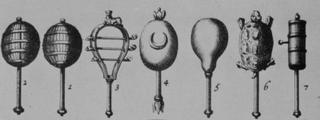
 Joseph-François Lafitau (1681-1746) was born in Bordeaux and studied philosophy, rhetoric and theology while becoming a Jesuit priest.
Joseph-François Lafitau (1681-1746) was born in Bordeaux and studied philosophy, rhetoric and theology while becoming a Jesuit priest.

Lafitau went to

Lafitau is best remembered for 2 distinctly different reasons. Firstly, he discovered ginseng, which was a new world native plant. But his great work, published in 1724, was Mœurs des Sauvages Américains (Customs of the American Indians) in 2 volumes. This treatise was a landmark in comparative ethnology, as Lafitau attempted to demonstrate that the indians arose from a common origin as people from the west. He did so by presenting their cultural characteristics in contrast with classical manners and customs from the antiquities. The first illustration in the book seems to symbolically hint at the inventory and comparison approach that is to come.


"But where Lafitau departs from all the grand comparators is in his stress on the importance of describing cultures in terms of themselves. In his view the savages of the New World were men, the Iroquois were people in their own right, and their customary ways were worthy of study. This was a new kind of primitivism that would transform generic savages into specific Indians."
 As usual with old books, there is a meandering road of translation and editions and I couldn't find any particular information out about the engravings (all the image details here are from Volume One). At first I thought that some of the individual figures had been directly lifted from renaissance publications as the style is certainly reminiscent of european engraving. But on going through the 30 or so plates, it's obvious that the author or engraver has chosen to portray a variety of styles. Certainly there are a number of depictions from subcontinental Indian religion together with more classical figures side by side with Iroquois examples.
As usual with old books, there is a meandering road of translation and editions and I couldn't find any particular information out about the engravings (all the image details here are from Volume One). At first I thought that some of the individual figures had been directly lifted from renaissance publications as the style is certainly reminiscent of european engraving. But on going through the 30 or so plates, it's obvious that the author or engraver has chosen to portray a variety of styles. Certainly there are a number of depictions from subcontinental Indian religion together with more classical figures side by side with Iroquois examples.
I found this fascinating book among the Champlain Collection at the University of Toronto library.
- Index page - the whole book has been digitized.
- These are sample illustrations from Volume One in mid-size format - large jpegs are available.
- The original French version is also available via La France en Amérique Lafitau webpage
- Lafitau biography

No comments:
Post a Comment